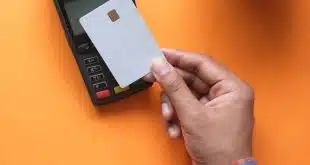In a new twist on stored-value plastic, JPMorgan Chase & Co. is issuing Visa-branded debit cards to low-income recipients of tax refunds. Working with Volunteer Income Tax Assistance offices in 16 cities, Chase expects the cards to help recipients who qualify for refunds under the Earned Income Tax Credit (EITC) to get their money more quickly while avoiding check-cashing fees and the costs of loans against expected refunds. “It's really the equivalent of a payroll card,” says a spokesman says the bank, with the exception that the federal government funds the card accounts with refund disbursements. While some 21.1 million people received $39 billion in EITC refunds in 2004, according to the most recent numbers available, the Chase spokesman says the bank does not expect to serve a big market for the new product, dubbed the Chase Direct Benefit Card. Issuance is confined to the VITA offices in Phoenix, Denver, Chicago, Detroit, New York, Columbus, Shreveport, Salt Lake City, McAllen (Texas), Flint (Mich.), Dallas, Houston, Austin (Texas), Indianapolis, San Antonio, and Milwaukee. A tax-preparation program offered by the Internal Revenue Service to persons earning $38,000 or less per year, VITA typically locates offices in libraries, schools, and community centers. At the same time, awareness of electronic payments among the target population is not likely to be high. “It's new, and we're dealing with people who don't have bank accounts,” the spokesman says. Chase, he says, has created the product as an investment in community development. No fee income is coming to Chase on the cards outside of interchange. “We'd consider it a success with a small number of cards,” the spokesman says. “Bottom line, we're probably losing on it.” By contrast, Chase already operates an electronic benefit transfer (EBT) program for 11 million cardholders in more than 35 states and territories, the United Kingdom, and South America. This program, which electronically deposits food-stamp, pension, and other benefits into stored-value accounts, handles more than 70 million transactions monthly. Once refund recipients enroll for a card at the VITA offices, Chase creates a prepaid account and sends a card to the recipient while sending instructions to the IRS to electronically send funds into the account. The IRS notifies the recipient when the refund has been deposited. At that point, the recipient can use the card anywhere Visa is accepted as a PIN debit or signature debit card, as well as at ATMs. Recipients can also elect to have Social Security or Veterans Administration benefits channeled into the same account. Chase is selling the card as a way for recipients to receive refunds faster and to avoid the fees generally charged by currency exchanges for check cashing. The government, meanwhile, benefits by reducing paper check processing.
Check Also
Ingo Payments Looks to Marqeta to Enhance Ingo’s Embedded Banking Platform
Ingo Payments, a provider of account funding, transfer, and payout solutions, has chosen Marqeta Inc. …





